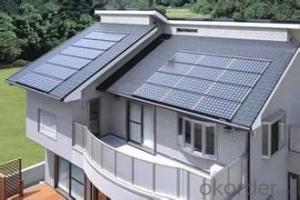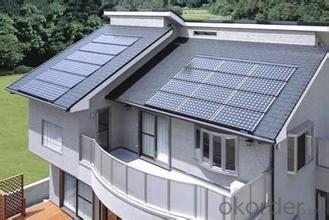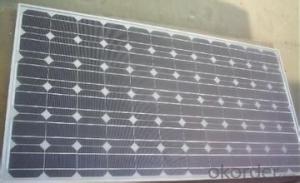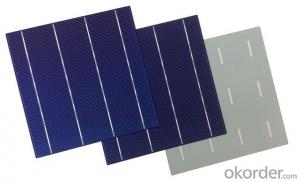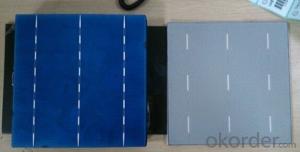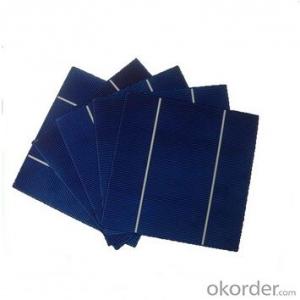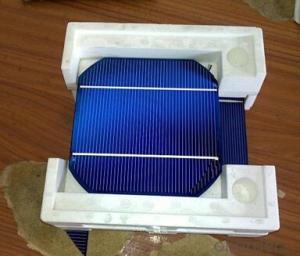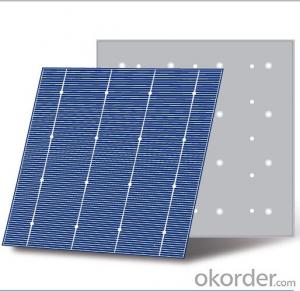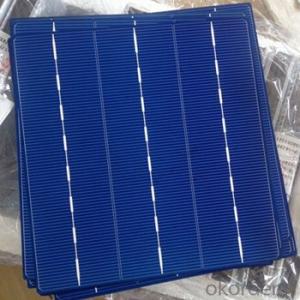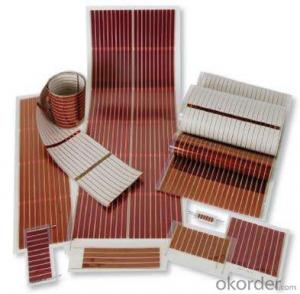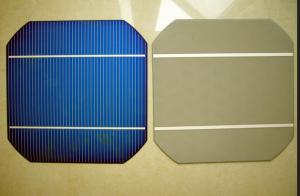Monocrystalline Silicon Solar Cell 156mm 2024
- Loading Port:
- China Main Port
- Payment Terms:
- TT OR LC
- Min Order Qty:
- -
- Supply Capability:
- -
OKorder Service Pledge
OKorder Financial Service
You Might Also Like
Quick Details
| Model Number: | |||||
| Material: | Size: | Number of Cells: | |||
| Max. Power: | Weight: | Rating Power (Pm): | |||
| Tolerance: | Rated Voltage (Vm): | Rated Current (Im): | |||
| Open Circuit Voltage (Voc): | Short Circuit Voltage (Isc): | Size of cells: | |||
| Website: |
Packaging & Delivery
| Packaging Detail: | Standard export packing |
| Delivery Detail: | 20days |
Specifications
1)High quality monocrystalline silicon solar cell
2) Competitive prices
3) TUV, UL, IEC61215,IEC61730, CE
monocrystalline silicon solar cell
1,Solar Module is widely used for
1)Microwave/radio repeater stations,
2)Electrification of villages in emote areas,
3)Medical facilities in rural areas,
4)Power source for summer vacation homes,
5)Emergency communication systems
6)Water quality and environmental data monitoring systems
7)Navigation lighthouses, and ocean buoys
8)Pumping systems for irrigation, rural water supplies and livestock watering
9)Aviation obstruction lights
10)Cathodic protection systems
11)Desalination systems
12)Recreational vehicles
13)Railroad signals
14)Sailboat charging systems
2) Product Description
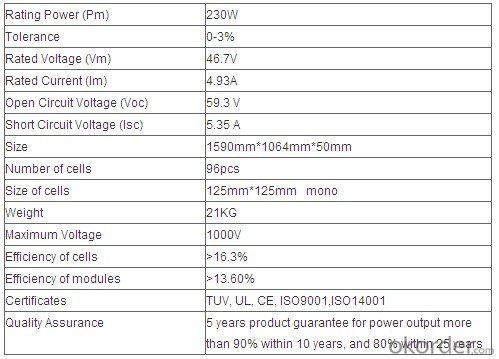
- Q: What is a monocrystalline solar cell?
- A monocrystalline solar cell is a type of solar panel that is made from a single crystal structure, typically silicon. It is known for its high efficiency and sleek, black appearance. The single crystal structure allows for better electron flow, resulting in greater energy conversion from sunlight into electricity.
- Q: Can solar cells be used for powering electric water heaters?
- Yes, solar cells can be used to power electric water heaters. By converting sunlight into electricity, solar cells can provide a sustainable and renewable source of energy to heat water in electric water heaters. This helps reduce reliance on traditional grid electricity and lowers carbon emissions.
- Q: How to define the poly solar cells as the A Grade one?
- You can check with the manufacturers first and they will tell you if the poly solar cells they are selling is the A grade level.
- Q: Can solar cells be used in agriculture?
- Yes, solar cells can be used in agriculture. Solar panels can generate electricity that can power various agricultural applications such as irrigation systems, livestock water heaters, and electric fencing. Additionally, solar energy can be harnessed to power greenhouse operations, improving crop yields and reducing reliance on traditional energy sources.
- Q: What is the payback period for solar cell installations?
- The payback period for solar cell installations varies depending on factors such as the cost of the installation, the amount of energy generated and consumed, and any applicable incentives or subsidies. On average, it can range from 5 to 10 years, but it is important to conduct a specific analysis considering individual circumstances to determine the accurate payback period for a given solar cell installation.
- Q: How do solar cells perform in high altitude locations?
- Solar cells generally perform better in high altitude locations compared to lower altitude areas. This is because higher altitudes often have less atmospheric interference, such as pollution and cloud cover, which can obstruct sunlight. Additionally, the thinner atmosphere at high altitudes allows for more direct and intense sunlight, resulting in increased solar energy generation. Overall, solar cells in high altitude locations can harness more sunlight and produce higher energy output.
- Q: What is the internal structure of solar panels
- 3) The main role of the battery is the power generation, power generation main market is the mainstream of crystalline silicon solar cells, thin film solar cells, both of their advantages and disadvantages.
- Q: Can solar cells be used for powering remote sensing devices?
- Yes, solar cells can be used for powering remote sensing devices. Solar cells convert sunlight directly into electricity, making them an ideal renewable energy source for remote areas or devices that require continuous power supply. Solar-powered remote sensing devices are commonly used in environmental monitoring, agriculture, and wildlife research, among other applications.
- Q: Can solar cells be used in marine applications?
- Yes, solar cells can be used in marine applications. They are commonly used in various marine applications such as powering navigation lights, communication systems, and electrical equipment on boats, yachts, and other marine vessels. Additionally, solar panels can also be used to charge batteries on marine vehicles, providing a sustainable and renewable source of energy.
- Q: Can solar cells be used in powering e-bikes?
- Yes, solar cells can be used to power e-bikes. Solar panels can be installed on the e-bike to convert sunlight into electricity, which can then be used to charge the e-bike's battery. This allows for a sustainable and renewable source of energy to power the e-bike, reducing reliance on traditional electricity sources.
Send your message to us
Monocrystalline Silicon Solar Cell 156mm 2024
- Loading Port:
- China Main Port
- Payment Terms:
- TT OR LC
- Min Order Qty:
- -
- Supply Capability:
- -
OKorder Service Pledge
OKorder Financial Service
Similar products
Hot products
Hot Searches
Related keywords
